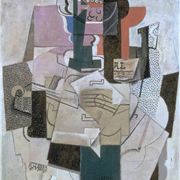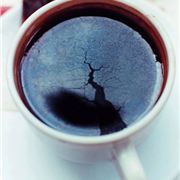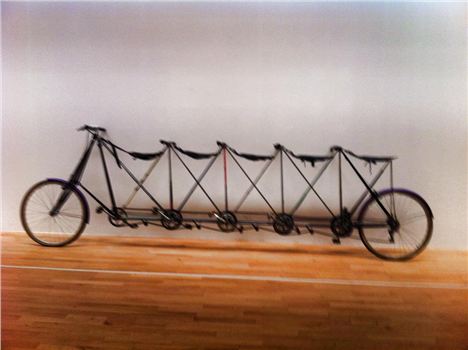THE idea behind Tate Liverpool's Constellations series is to take works of art and orbit them around major “stars” – triggers that have had an explosive impact on art history.
There are nine “constellations” and over 100 artworks in all – all from the Tate's own collections.
In this, the final section, completed just a month ago, the focus is on a Famous Five chosen for their continuous revolutionary effect on modern and contemporary art.
They are Picasso’s Bowl of Fruit, Violin and Bottle (1914), The Inattentive Reader (1919) by Matisse, Man Ray’s L'Enigme d'Isidore Ducasse (1920), Barbara Hepworth’s Single Form (Eikon) (1937-8) and Summertime: Number 9A (1948) by Jackson Pollock.
 This: Picasso's Bowl Of Fruit,
This: Picasso's Bowl Of Fruit,
Violin And BottleIn the aura of these modern masterpieces are works by Constantin Brancusi, Louise Bourgeois, Isa Genzken, Douglas Huebler, Daria Martin and León Ferrari, among others.
Overall, the displays aim to revealing the many different narratives and key episodes across art history that link the works together.
As a result, visitors are forced to intellectually engage with the works in front of them and view them from a fresh perspective beyond the what-you-see-is-what-you-get gallery day out.
 And this: Wolfgang Tillmans'
And this: Wolfgang Tillmans'
Chaos Cup, 1997It is easy to raise an eyebrow at the concept. Was Wolfgang Tillmans' Chaos Cup photograph really influenced by Fruit, Violin, Bottle? Perhaps not. Yet the display asks “Why not?” A simple thread draws them together: capturing still life.
The same constellation links you from this theme to “immediacy” and “temporality” - buzz words used to describe Jonas Mekas’ video Diaries, Notes & Sketches. The compiled recordings, you might think, are what a still life painter would have captured if you had given them a video camera.
Hopefully, here, you will catch the John Lennon and Yoko Ono segment within the screening. The cameraman focused on tiny movements that illustrate the classic thousand-words-in-a-picture, such as the couple playing footsy while a crew faff around them at one of their bed-in protests.
After viewing this trio placed next to each other, any scepticism about constellations may fade. The trigger works, whether you believe them to have influenced other artists or not, start to instigate that thought process and encourage a refreshing way to view an exhibit.
Throughout the new floor, on which the DLA Piper sponsored show is mounted, it is also easy to see who the masters are and why they get so much credit. Henri Matisse, for example, heads a constellation using buzz words such as “female subject”, “interiority”, “colour” and “impressionism”.
You can compare and contrast a number of paintings following these themes, but it will soon become clear that Picasso’s Girl in a Chemise (main image, top) blasts them all out of the water. His choice of skin colour defied the peachy pink glow you see in many other paintings; instead, the purplish pink palette Picasso used captured the girl’s malnourishment and her resulting illness.
 Simon Starling. Five-Man Pedersan, 2003. Made From 20 Vintage Bicycles.
Simon Starling. Five-Man Pedersan, 2003. Made From 20 Vintage Bicycles.
Art in all shapes, sizes and materials is drawn together: picture in front of you a five-man bicycle display. To the right of it, a surrealist painting hangs next to a huge mirror mirage; in front, a sewing machine is wrapped in a blanket; and to the left, you are able to view a portrait by Picasso.
All the Tate needs to do now is update the gift shop. Then, you could take home a souvenir of a piece on display that you think deserved the true star prize.
DLA Piper Constellations, Tate Liverpool, Albert Dock, L3, ongoing.















